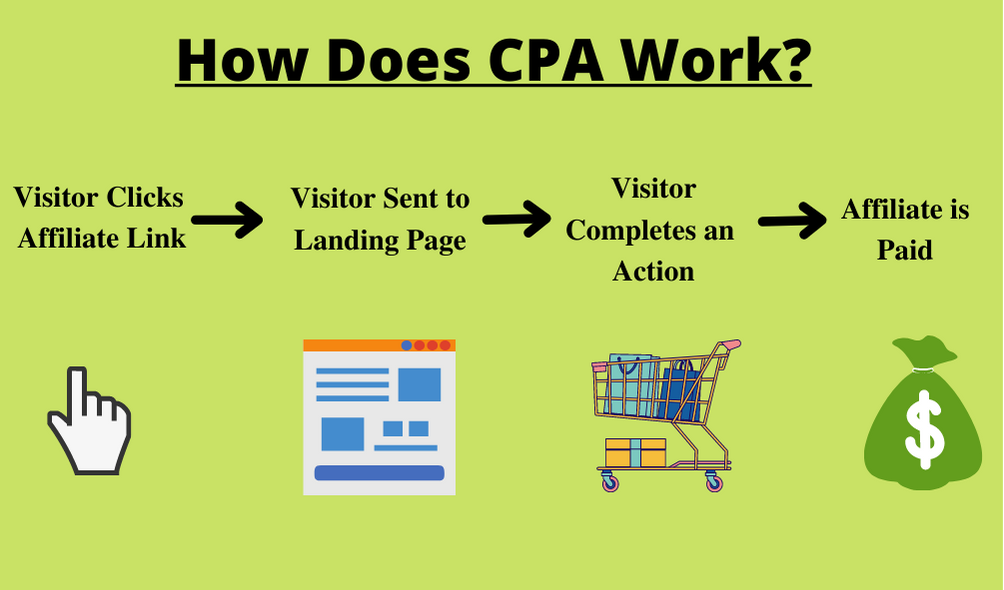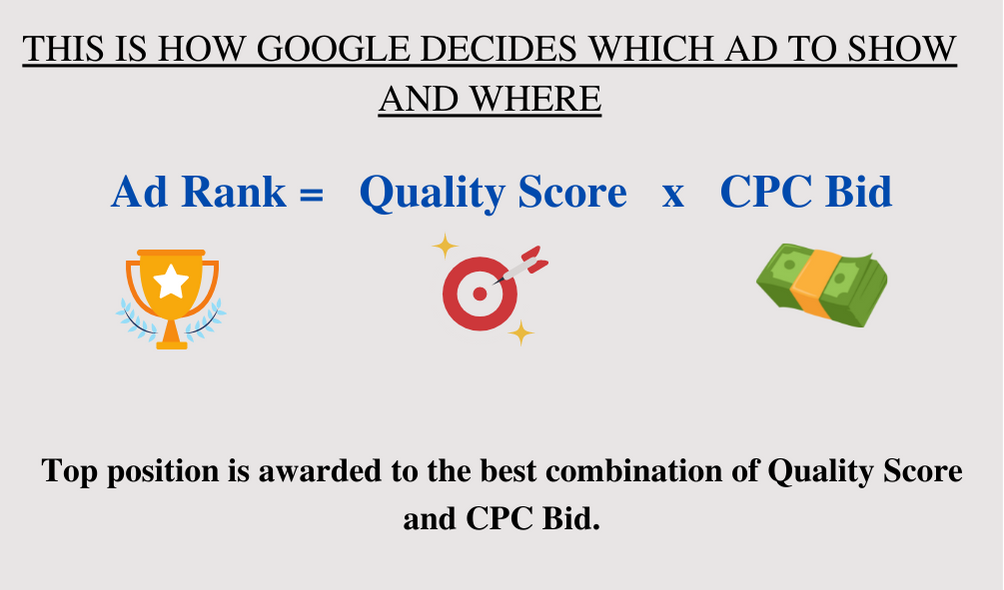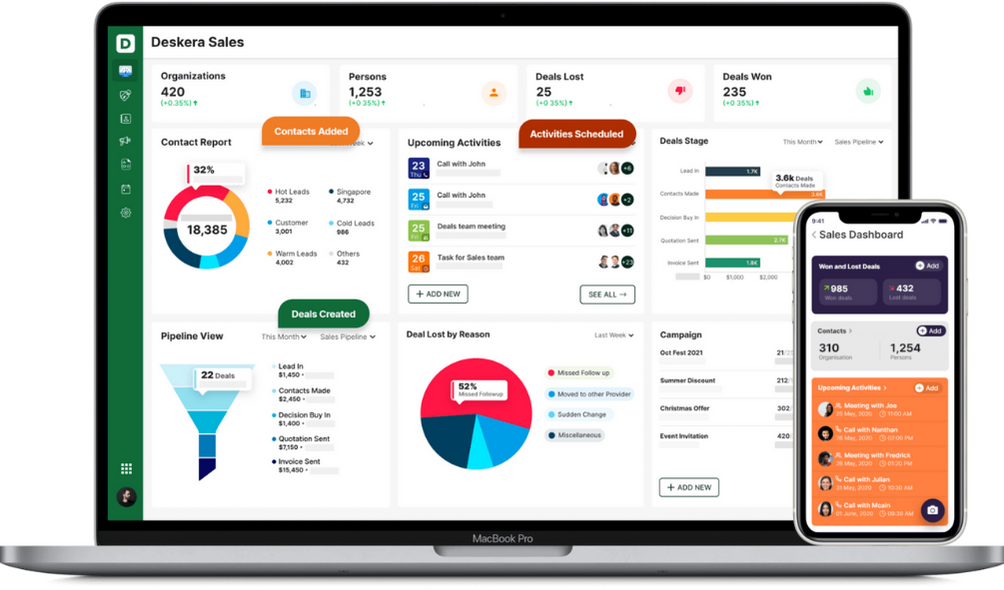Content, Conversions, and CPAs are all close relatives of each other!
You want to make sure your content engages and emotionally resonates with your audience so that it sells your product to them.
But how can you tell if that content is compelling enough?
You have drafted and designed your content with your customers in mind and therefore, you expect them to make the final move of purchasing. Despite getting the clicks you wanted, you are unsure if they are converting. To measure your content's conversion potential you will have to consider measuring cost per acquisition or the CPA in your advertising campaigns.

The post lays out all the details of the CPA along with the following key elements:
- What is Cost Per Acquisition?
- Why is CPA Important?
- What is Cost Per Acquisition Bidding?
- Cost Per Acquisition Formula?
- How to Calculate CPA?
- Cost Per Acquisition Example
- Optimizing Your Cost Per Acquisition Costs
What is Cost Per Acquisition?
CPA can be referred to as a mathematical calculation to assess the average expenditure of sales and marketing to acquire a new customer. CPA or the Cost Per Acquisition is a marketing metric that lets the marketers know if their marketing efforts result in positive outcomes in the form of conversions. Conversions could either be in the form of clicks, sales, downloads, sign-ups or form submissions.

While clicks can indicate that the readers or customers are getting attracted to your content, it remains to be seen if they have stayed back and converted. The CPA is probably the best indication of whether or not the content has managed to hit the bull’s eye, i.e. if it has persuaded the lead to download or purchase your product.
Why is CPA Important?
CPA is calculated to monitor if the investments made for the advertising and marketing of a product are showing positive results. Gauging the financial efficiency of your marketing efforts can be easier when CPA is combined with CLV or the Customer Lifetime Value. Like CPA, CLV is also an integral component that lets you know ROI against your sales and marketing expenditure.
The importance of CPA lies in the fact that without measuring it you may overspend on earning a new customer. Estimating your CPA values can ensure better sustainability for your business and build a robust marketing strategy to acquire new customers.
What is Cost Per Acquisition Bidding?
The CPA bidding is different from the common biddings and auctions that we see in general. Google and other advertising platforms aim at leveraging the outreach of the ads and therefore, they award the bid to the highest Ad rank rather than the highest bidder.
When you multiply your maximum price for each acquisition bid with your ad’s quality score, the product is the Ad Rank. The quality score is, in turn, measured by the relevance of your keyword on the page, the click-through rate, and the user experience. This clearly indicates that the content has to be compelling enough, and the highest bidding is not the only criteria.

It is Google's goal to encourage the best advertisers with the best results on its search engine. Ads with higher quality scores are ranked higher and at a lower cost per acquisition. Not only that, Google has its way of dissuading the bad advertisers by not awarding them the top position; and in case they would want to have the top position, they must pay a heavier cost per acquisition bid.
If you are a marketer looking to generate maximum conversions with the budget, then this would be a good point to learn about Google’s Target CPA bidding. In target CPA bidding, some conversions may cost more than others based on your quality score or the level of competition in the ad auction. Google will, however, make every effort to keep your cost per acquisition as close to the average target CPA as possible.
Cost Per Acquisition Formula?
The CPA formula is given by the marketing and sales costs divided by the total number of customers newly acquired.
How to Calculate CPA?
Let’s learn about the steps to calculate the CPA:
Data Collection
The first step is to collect the data relevant to the timeframe for which you want to calculate the CPA. Before collecting your data, ensure that you selected a monthly, yearly, or quarterly timeframe. Any smaller timeframe may take your results a bit farther from accuracy.
You will need to have the following information:
- All the costs in the direction of marketing efforts. This includes your team’s salaries, incentives, operational costs, advertising expenditure, and other costs
- All the costs are in the direction of your sales efforts. This includes your sales’ team’s salaries, incentives, commissions, and so on
- Also gather the number of newly acquired customers in this time period
However, you need to remember that you must not include the material costs, new sales cost, or new customer service costs from your already existing customers.
Formula and Calculation
As soon as you have the numbers for the marketing costs and sales costs, apply the formula of the CPA calculator as observed in the previous section.
Result Analysis
The calculation result will lead you towards a proper analysis and will help you assess if your strategies are in the right direction. Here is what you can do to analyze your outcomes:
- Draw a comparison of previous and current CPA values from similar lengths of timeframes. This will enable you to know if and by how much you have progressed
- Draw comparisons between the current CPA and average CLV if the costs spent on the marketing efforts have yielded profits
Track Your CPA
Having analyzed your CPA, it is now time to take an action and keep a close track of your CPA. keep comparing and reviewing it. You can also evaluate the CPA in combination with the other key metrics to enhance your sales and marketing strategies.
Cost Per Acquisition Example
Assume John is an owner of an online toy store. He decides to start with an advertisement on social media platforms. This ad campaign costs him $850 in addition to an existing amount of $450 that he makes each month on the campaigns. This particular month, say January, he acquires 50 new customers owing to the ad campaign. All of them buy toys or some other gifts from his store.
So, how will he calculate CPA for January?
According to the provided data:
The result shows that the cost incurred by John to earn or acquire a new customer is $26.
Now, for analysis, John can look into his previous months’ CPAs and compare them to this one to know if there has been progress. Are his CPAs going down or up? What can he do to bring the CPA to a lower value?
Answers to all these questions will eventually give John have a better insight into his sales and marketing strategies.
Optimizing Your Cost Per Acquisition Costs
Having learned how to calculate CPA, we must now look at optimizing the CPA costs. Here are the steps you can take to achieve that:
Focus on Segmentation
By fine-tuning your audience segments to target visitors who are most likely to be converted, you can lower your CPA. You can also arrange to leave out the geographical locations that have generated fewer clicks in the past.
To do so, you will need to acquire information which you will need to fetch from your website. Follow this path on your website's Google Analytics dashboard: Audience>Geo>Location. This page will give you all the information about your conversion rates by region, which means you can see the geographical locations that convert the most.
You can also tweak your Google Advertising audience setting to focus more on high-converting regions while removing ads from individuals who are less likely to convert.
Boost your Quality Rating
A better ad structure will enhance your quality score, resulting in cheaper ad spending. Google calculates CPA depending on your quality score. Single keyword ad groups or SKAGs can ensure that each ad group addresses the most pertinent and strong keywords.
Furthermore, keywords with a very low CTR and nearly no conversion should be suspended or stopped.
Make Your Ad Copy More Efficient
While you consider your existing ad copy in detail, you must ensure that the message it carries corresponds and complements the goal of your ad. As a result, you are likely to engage more customers and achieve a higher conversion rate as well.
Alternatively, you can also tap on the emotional quotients and emotional factors such as FOMO or Fear of Losing Out and design your ad copy accordingly. This tends to improve the impact of your ad copy.
Create Impactful Landing Pages
So, people are getting drawn to your ads and you have achieved a considerable CTR. However, this is only half of the work. You still need to build creative and engaging landing pages that let the users know about the value your product can add to their lives. You can take clues from your competitors and look around for excellent examples and ideas for creating those enticing landing pages. Whether you create a retail store landing page or an E-commerce landing page, you can design them by including clear CTAs and conveying your value-add to the customers.
To accomplish great results with your landing pages, ensure that you follow the best practices and avoid mistakes while creating them.
Test Your Ads
Throughout your marketing journey, you must keep testing your ads for their efficacy. A/B testing is one way you can accomplish your efforts in this direction. Using it, you will know that if you are using the most appropriate copy for each of your customer segments. With 2 different ads is the ad groups, you can constantly test which ad works out the best.
Deploy Retargeting Techniques
Retargeting is effective for the visitors who had once visited your page and left due to some reason. Retargeting allows you a chance to reconnect with them and persuade them to make a purchase this time around. Cart abandonment is one factor you should consider here and work on reducing.
Implement plans for Optimizing Conversion Rate
It is vital to note that your CPA is inversely proportional to the CRO or Conversion Rate Optimization. Once your conversions increase, your CPA will go down. Work on all the aspects that will boost your conversions from customer experience to adopting the latest marketing strategies. Learn what is it that is hampering or obstructing your conversions. If conversion at your store is about making a purchase, for example, then see to it that you have a smooth checkout process. Likewise, go on optimizing your conversion rate for a better CPA.
How can Deskera Help You?
Keep a track of all your campaigns and related statistics on a single page with Deskera CRM. Its sales dashboard lets you see your running campaigns, deals, pipeline. You can also manage and design responsive landing pages efficiently.

Learn about the exceptional and all-in-one software here:
Key Takeaways
We hope to have helped you with this guide on CPAs in marketing. Let’s brush up our highlights on the topic here:
- The cost per acquisition is a marketing metric that is useful for determining whether your marketing efforts are resulting in new conversions
- Understanding your CPA may assist you in optimizing your marketing budget and analyzing what works for your advertising spend
- It also helps in determining whether or not the is investment is efficient
- The importance of CPA lies in the fact that without measuring it you may overspend on earning a new customer
- The CPA formula is given by the marketing and sales costs divided by the total number of customers newly acquired
- Working on quality score, focusing on segmentation, testing the ads, and deploying retargeting techniques are some of the efficient ways to optimize your CPA
Related Articles













